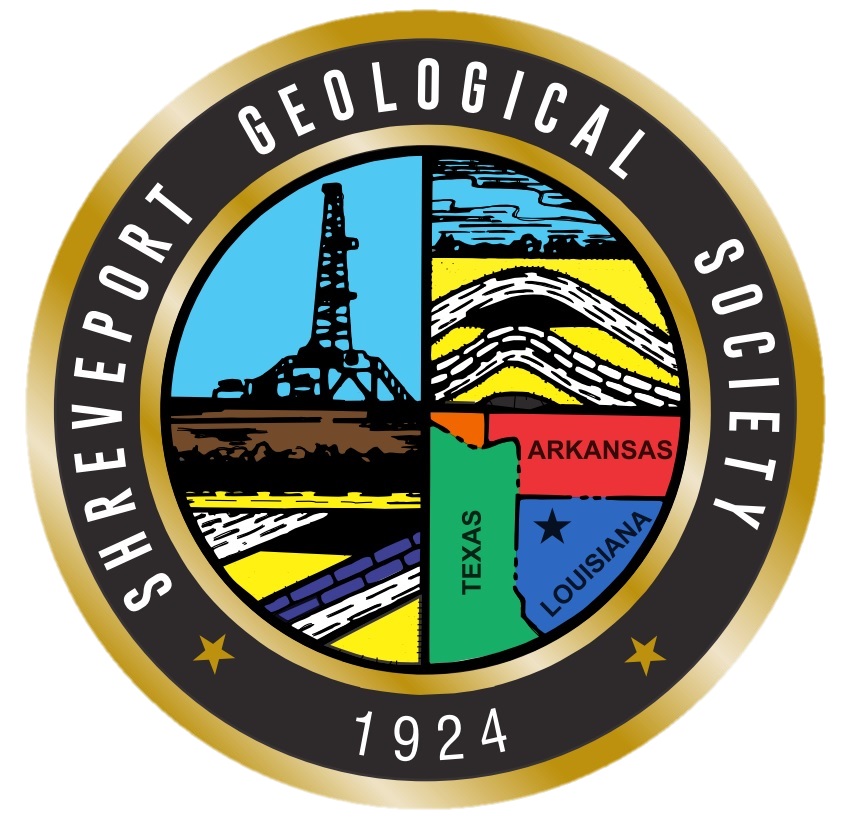Relatively Large Smackover Microbialite Patch and Fringing Reefs, A New Exploration Play for the Brooklyn Field area and the Eastern Conecuh Embayment of South Alabama
Presented by: Larry Baria
In-Person
Where: The Petroleum Club of Shreveport, 15th floor
Member Cost: $25 • Non-Member Cost: $35
SGS now accepts Tap Pay via Zelle for meeting payments!
If you’d like a seat, kindly use the form below to make your reservation by the preceding Friday.
We encourage members to invite guests, spouses, and friends to any of our meetings.
Virtual
Via Zoom
Member Cost: $10 • Non-Member Cost $15
**After checkout, you will receive an email with the Zoom Meeting details. You may sign up anytime before the meeting begins.
Lawrence R. Baria
Lawrence R. Baria (Larry) has been working on carbonate geology of the Gulf Coast for over 40 years.
Abstract
Lower and middle Smackover microbialite build-ups are providing 100’ to 200’ thick porous oil reservoirs along localized flexures and paleo-bathymetric highs in a mid-ramp, upper Jurassic setting. Recent drilling and 3-D seismic acquisition in Covington, Conecuh and Escambia Counties, Alabama, has delineated a trend of excellent producing wells (400 to 1300 BOPD) developed across the mouth of the Conecuh Embayment. In this setting greater Smackover thicknesses probably attest to increased water depths and greater accommodation space which allowed significant vertical reef build-ups in a less restrictive and possibly better environment of marine circulation than those inboard and within the embayment. Cumulative primary production from these reefs could lie on the order of one to three million barrels per well. This trend occurs basin-ward of the prolific Little Cedar Creek and Brooklyn Fields which were established over the last several years. The latest discoveries appear to represent stacked, multi-cycle bioherms developed throughout the lower and middle (Smackover C & B) highstand sequences.
These recently discovered massive microbialite colonies consist of a variety of cyanobacterial growth patterns including: laminated crusts, digitate columns, crenulate clusters, and a pelleted, clotted fabric. Occasional epifaunal foraminifera, gastropods, thin shelled pelecypods, sponges, echinoid spines, red algae and serpulid worms are observed encrusting and providing internal sediment to the reefal build-ups. Core descriptions attest to two stages of reef development with a significant lowstand exposure between and above both transgressions. Petrophysical properties of 2-5 darcies and 20% porosity are not uncommon in the mid-ramp reservoirs. Early cementation of the reef framework allowed the development of syndepositional and early burial fracturing to occur which further enhanced reservoir continuity and fluid flow characteristics.
Biography
After a decade of schooling at Louisiana Monroe and LSU, Baria began working with Getty Oil Co.'s R&D group investigating carbonate reservoirs in Kuwait, West Texas and the Gulf Coast Smackover. In 1980 he formed Jura-Search Inc. to generate drilling prospects within the Alabama, Mississippi, and ArkLaTex basins. and this continues to be his primary focus today.
He has also been active in core description and petrographic work as a consultant for Denbury Resources, Venture Oil, Mosbacher, Conoco Phillips and Saudi Aramco. Jura-Search Inc. sponsors numerous graduate student research projects on the Gulf Coast Jurassic formations in association with Ole Miss, Univ. of Alabama, Louisiana Lafayette, etal. Baria tries to stay active and healthy by leading field trips to study the Wyoming/Montana regions and the modern carbonate sediments of the southern Bahamas.







































